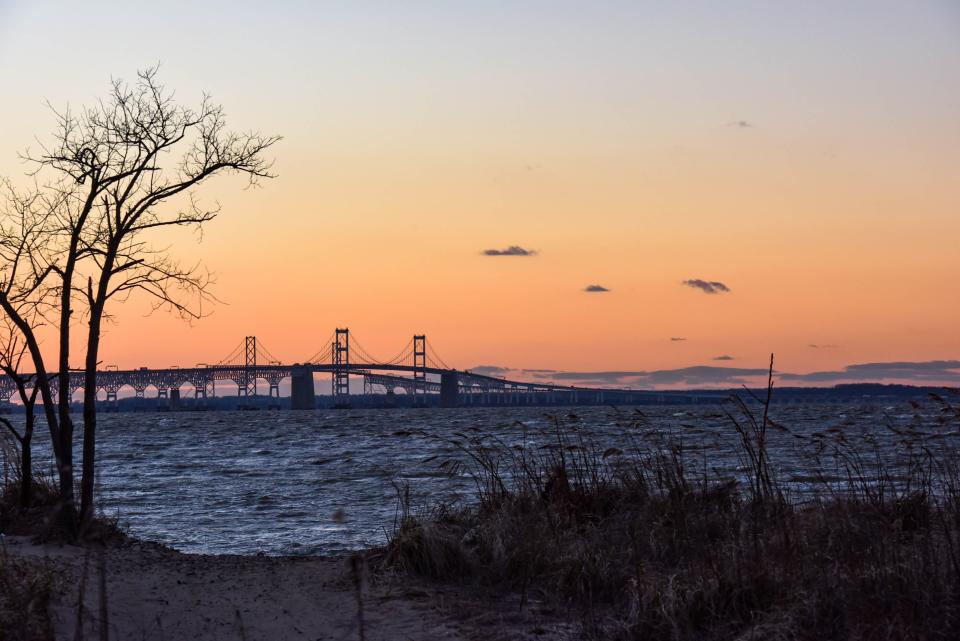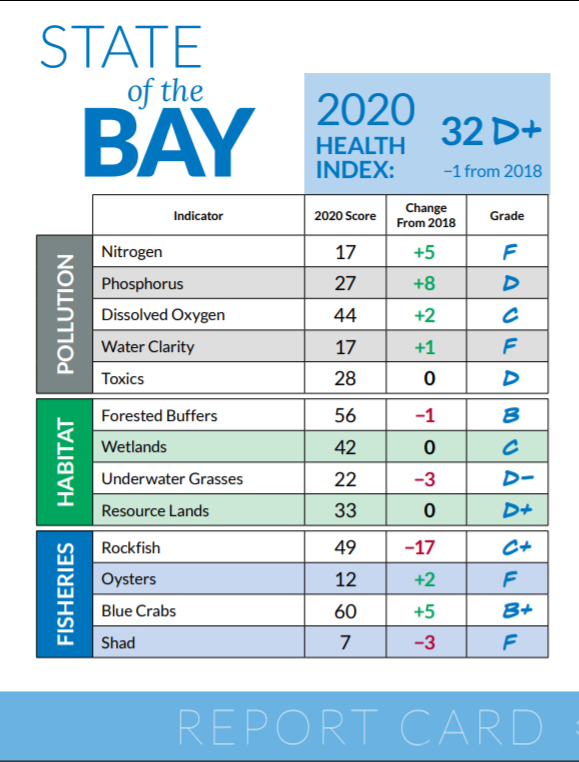Chesapeake Bay dead zones forecast to be lower for summer 2022
The ripple effects on commerce and the environment when the Chesapeake Bay is replete with "dead zones" of low oxygen is profound, but this season's forecast has a silver lining.
In June, researchers announced hypoxic volume, or “dead zones”, is predicted to be 13% lower than average over the summer months thanks to below average amount of water entering the bay from the watershed’s tributaries this past spring.
The forecast also means decreased nutrient and sediment pollution from jurisdictions within the watershed. The researchers are from the Chesapeake Bay Program, the University of Maryland Center for Environmental Science, University of Michigan and U.S. Geological Survey.
“Dissolved oxygen levels are a key measure of bay health, as sufficient oxygen is needed to support vital fish, crab and oyster populations, as well as a healthy ecosystem. The forecast brings attention to our continued progress towards implementation of nutrient reduction strategies to improve oxygen conditions," said Mark Trice, water quality program manager for the Maryland Department of Natural Resource.

These areas form when excess nutrients, including both nitrogen and phosphorus, enter the water through polluted runoff and feed naturally occurring algae. This drives the growth of algae blooms, which eventually die and decompose, removing oxygen from the surrounding waters faster than it can be replenished.
More on the 2020 studyThe 'dead zone' study keeps on pace.
Aaron Bever, managing scientist at Anchor QEA, a firm that studies models and forecasts based on the most up-to-date river flow and nutrient inputs from the U.S. Geological Survey, noted this summer is shaping up to be similar to 2020, when hypoxia conditions were relatively good compared to the long-term average and the recent past.
"We will have to wait and see how weather during the summer of 2022 impacts the total amount of hypoxia, but the bay is off to a promising start to the summer,” Bever said.
'Dead zone' impact

Throughout the year, researchers measure oxygen and nutrient levels as part of the Chesapeake Bay Monitoring Program, a baywide cooperative effort involving watershed jurisdictions, several federal agencies, 10 academic institutions and more than 30 scientists.
Among these institutions, the Maryland Department of Natural Resources and Virginia Department of Environmental Quality conduct eight to 10 cruises between May through October, depending on weather conditions, to track summer hypoxia in the Chesapeake Bay.
Results from each monitoring cruise can be accessed through the Eyes on the Bay website for the Maryland portion of the bay and the VECOS website for the Virginia portion.
More on Conowingo pollutionThe Conowingo Dam is at the center of the pollution controversy.
“The fact that hypoxia in the bay is once again forecasted to be lower than the long-term average is clearly a positive sign for bay restoration. When we consider that hypoxia is continually being exacerbated by marine heat waves and warmer bay waters, this recent success of our nutrient management efforts is even more impressive," said Marjy Friedrichs, a Virginia Institute of Marine Science research professor.
Weather conditions also play a role in the size and duration of the annual dead zone. Heavy rainfall can lead to strong river flows entering the bay, which carries along increased amounts of nutrient and sediment pollution. Above average spring freshwater flows to the bay, along with hot temperatures and weak winds in the summer, provide the ideal conditions for the dead zone to grow larger and last longer.
The Chesapeake Bay Foundation noted under the Chesapeake Clean Water Blueprint, that in 2010, the bay jurisdictions agreed to cut nitrogen, phosphorus and sediment pollution in the bay and its waterways to science-based numeric limits.
The Blueprint gives them until 2025 to adopt the policies and practices needed to achieve those reductions. The three major bay states are Virginia, Maryland and Pennsylvania. Virginia is largely on track to meet its commitments the foundation said. Maryland must ramp up its efforts to reduce pollution from agriculture as well as ensure its sewage treatment plants are in compliance with their permits. However, Pennsylvania is significantly "off track."
“The bay states are relying on reducing pollution from agriculture as the primary means of meeting Blueprint commitments. Many conservation practices have the added benefits of helping to reduce greenhouse gases, making farms more resilient to climate change with its more intense storms and improving the farmer's bottom line," said Beth McGee, Chesapeake Bay Foundation director of science and agricultural policy.
EXPLORATION: Chesapeake Bay nature area is close to becoming a reality
The foundation argues the Susquehanna River delivers about 40% of the nitrogen pollution that causes dead zones, with the vast majority of that coming from Pennsylvania.
"Pennsylvania’s plan to meet its requirements, however, is sorely deficient. By its own accounting, the Commonwealth needs to increase spending by more than $300 million or more annually to implement a plan that does not even achieve the requirements," said the foundation in a statement.
Currently, the foundation and the attorneys general for Virginia, the District of Columbia, Maryland, and Delaware are suing the Environmental Protection Agency over "its failure to hold Pennsylvania accountable."
This article originally appeared on Salisbury Daily Times: Chesapeake Bay: Dead zones predicted to be lower summer 2022

